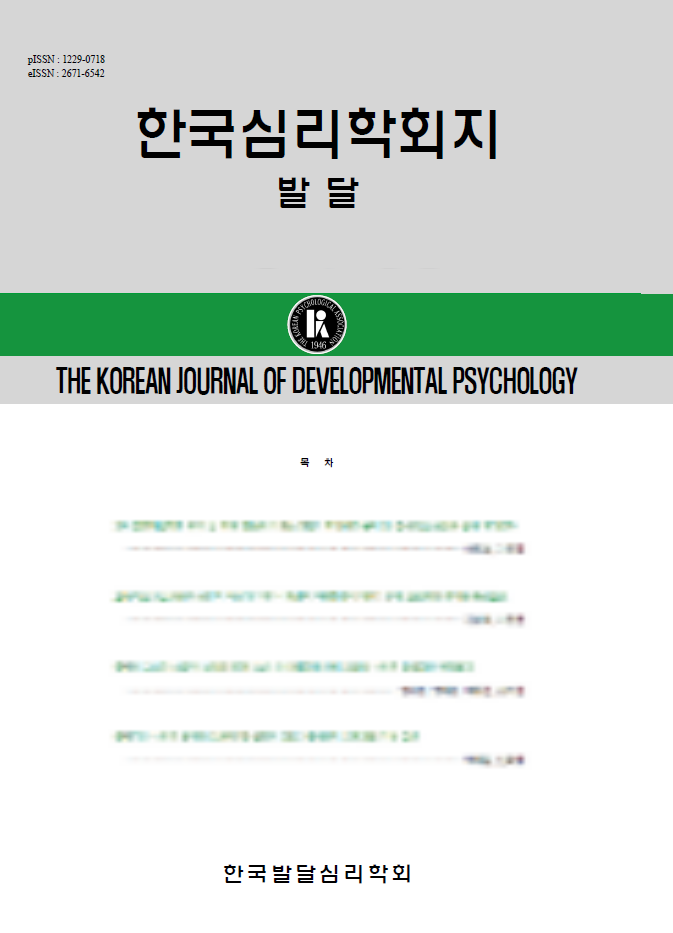open access
메뉴
open access
메뉴 ISSN : 1229-0718
ISSN : 1229-0718

총칭 표현(예, 새는 날개가 있다)는 종류에 대한 보편적인 특징을 기술하여 범주에 대한 지식 습득을 돕는다. 선행연구들은 총칭표현의 이해와 사용이 만 4세부터 정교해진다고 제안하였는데 이러한 연구는 영어습득 아동에게 한정적이었다. 본 연구에서는 한국어에서 활용되는 총칭 표현의 특징을 실험적으로 검토하고, 총칭표현에 대한 이해가 만 3세 아동에게서도 발달되어 있는지를 검토하고자 하였다. 실험 1에서는 우선 성인들이 보편적인 속성을 묘사하는 문장에서 보이는 형태론적 특징들을 검토하여 한국어 총칭 표현에는 주로 원형 단수 형태와 조사 ‘은/는’이 함께 나타나는 경향을 확인하였다. 실험 2에서는 만 3세 아동에게 이러한 총칭 표현을 제시하고, 비총칭 표현에 비해 언급된 범주의 속성을 다른 대상에게 확장시키는지를 검토하였다. 실험 결과, 만 3세 아동은 총칭 표현의 대상이 다수인지 소수인지에 영향을 받지 않고 보편적 속성을 추출하고 확장하였으며, 예외적인 경우(예, 새는 날지만 이 새는 못 난다와 같이)가 함께 제시되었을 때에도 발화된 표현에서 총칭성을 구별하는 것으로 나타났다. 이는 총칭 표현의 이해와 활용이 만 3세부터 정교하게 발달하고 있음을 시사한다.
Generic expressions (e.g., “Birds have wings”) describe different general properties and help children acquire knowledge of a given category. Although prior studies have suggested that generic inferences become more sophisticated around 4 years of age, no studies have tested younger age groups, and the findings have largely been limited to children in English-speaking communities. The present study examined Korean-speaking 3-year-olds’ abilities to make inferences based on generic expressions. First, we elicited and analyzed Korean-speaking adults’ utterances that described general properties of an animal category, and found that the most widely utilized generic noun phrases (NPs) of Korean were bare singulars, with the topic marker eun/nun accompanying these NPs. We then presented Korean 3-year-olds with generic expressions about properties of novel animals using these morpho-syntactic features, and observed the extent to which they were willing to extend the property to a novel instance of the given category. Specifically, we examined whether 3-year-olds can make generic inferences regardless of the strength of evidence (e.g., number of exemplars), or when an exception was introduced. We found that 3-year-olds can make generic inferences regardless of evidence strength, and distinguish genericity from nongenericity despite the presence of an exception. The findings suggest that sophisticated abilities to make generic inferences are present as early as 3 years old, and the development of inferential abilities is universal rather than language- or culture-specific.
곽은주 (2002). Structural relations in korean discourse generics. 한국언어학회, 27(1), 25-46.
권도하, & 정분선 (1999). 2~5세 유아의 복문발달에 관한 연구. 言語治療硏究, 8, 157-173.
김순자, & 김명희 (2005). 일반 논문: 지시어“이”, “그”, “저”의 지시 기능 습득 과정. 텍스트언어학, 19, 63-81.
김일웅 (1982). 지시의 분류와 지시사 ‘이, 그, 저’의 쓰임. 한글, -, 53-88.
박기성 (2000). 영어화 한국어의 총칭성에 관한 대조 분석. 코기토, 55, 271-302.
유유현 (2010). 총칭성과 정보구조. 텍스트언어학, 28, 129.
전영철 (1997). 한국어 총칭문의 유형. 언어학, 21, 289-303.
전영철 (2003). 한국어 총칭표현들의 의미론적분석. 언어학, 37, 267-295.
전영철 (2004). 한국어의 복수성과 총칭성/한정성. 언어와 정보, 8, 27-45.
조명한 (1982). 한국아동의 언어획득 연구. 서울:서울大學校.
Chambers, C., Chambers, S., Graham, J., & Turner. (2008). When hearsay trumps evidence: How generic language guides preschoolers’ inferences about unfamiliar things. Language and Cognitive Processes, 23, 749-766.
Cimpian, A., Cimpian, E., & Markman. (2008). Preschool children’s use of cues to generic meaning. Cognition, 107, 19-53.
Gelman, S. A. (2004). Learning words for kinds:Generic noun phrases in acquisition. Weaving a Lexicon, 445-484.
Gelman, S. A., Star, J. R., & Flukes, J. (2002). Children's use of generics in inductive inferences. Journal of Cognition and Development, 3, 179-199.
Gelman, S. A., Goetz, P. J., Sarnecka, B. W., & Flukes, J. (2008). Generic language in parentchild conversations. Language Learning and Development, 4, 1-31.
Gelman, S. A., & Tardif, T. (1998). A crosslinguistic comparison of generic noun phrases in english and mandarin. Cognition, 66, 215-248.
Gelman, S. A., & Raman, L. (2003). Preschool children use linguistic form class and pragmatic cues to interpret generics. Child Development, 74, 308-325.
Gelman, S. A., & Bloom, P. (2007). Developmental changes in the understanding of generics. Cognition, 105, 166-183.
Graham, S., Nayer, S., & Gelman. (2011). Twoyear-olds use the Generic/Nongeneric distinction to guide their inferences about novel kinds. Child Development, 82(2), 493-507.
Hollander, M. A. (2002). Children's interpretation of generic noun phrases. Developmental Psychology, 38, 883.
Lyons, J. (1977). Semantics Cambridge University Press.
Murphy, G. L. (2004). The big book of concepts. Cambridge, Mass.: MIT Press.
Prasada, S., & Prasada. (2000). Acquiring generic knowledge. Trends in Cognitive Sciences, 4, 66-72.
